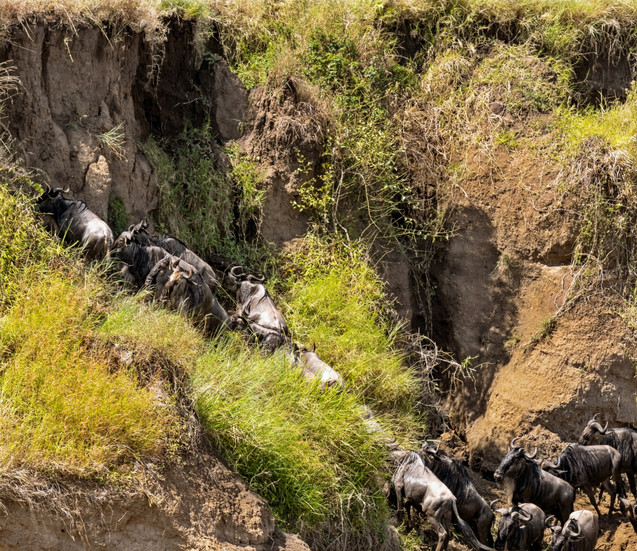Exploring the Phenomenon of The Wildebeest Great Migration
- Penny
- Aug 15, 2024
- 2 min read
Updated: Aug 16, 2024
The Wildebeest and Zebras stand united as one powerful force during the Great Migration
The wildebeest migration is the largest animal movement globally, involving over two million wildebeest and 20,000 other animals. It occurs from July to October, from the Serengeti National Park in Tanzania to the Maasai Mara National Reserve in Kenya. The animals must navigate the Mara River, facing threats from crocodiles, lions, leopards, and cheetahs.
Understanding the Magnificent Animal: The Wildebeest
Wildebeest, also known as Gnus, are sizable African antelopes resembling slim, muscular cows with curved horns and striped bodies. They thrive in savannahs and plains, adapting to various habitats. The largest populations are in the Serengeti region spanning Tanzania and Kenya. Wildebeest communicate through sight, smell, and vocalizations. They are active day and night, constantly searching for vegetation, mainly grass. During the wildebeest great migration river crossings, they attempt risky areas, often resulting in accidents.
The Crossing begins.
As the wildebeest were about to cross, they halted upon hearing a zebra nearby. Wildebeest possess acute hearing abilities, while zebras rely on their sharp eyesight to alert others of potential threats. Concealed in the bushes on the right bank, a lioness patiently awaited the opportune moment to strike, aware that not all would survive the crossing.
Suddenly, the zebras gave the signal, prompting the herd to start moving. A multitude of wildebeest, gazelles, and zebras dashed down the bank, leaping into the river below. Below in the river, the crocodiles waited eagerly. On the opposite side, the young wildebeest cried out for the adults to venture across.
Achieve success or deal with the repercussions?
Not all drownings are accidental. The influx of tourists in the Maasai Mara during the great migration sometimes leads to aggressive behavior, causing them to encroach too closely on the herds. This disrupts the animals' safe passage, forcing them to cross rivers at riskier points more frequently. The riverbanks may be too steep, hindering the animals from crossing swiftly, resulting in pile-ups, injuries, or drownings. While photographers aim for the perfect shot, it is essential to show respect towards the animals, maintain distance, and let nature unfold naturally.








Comments